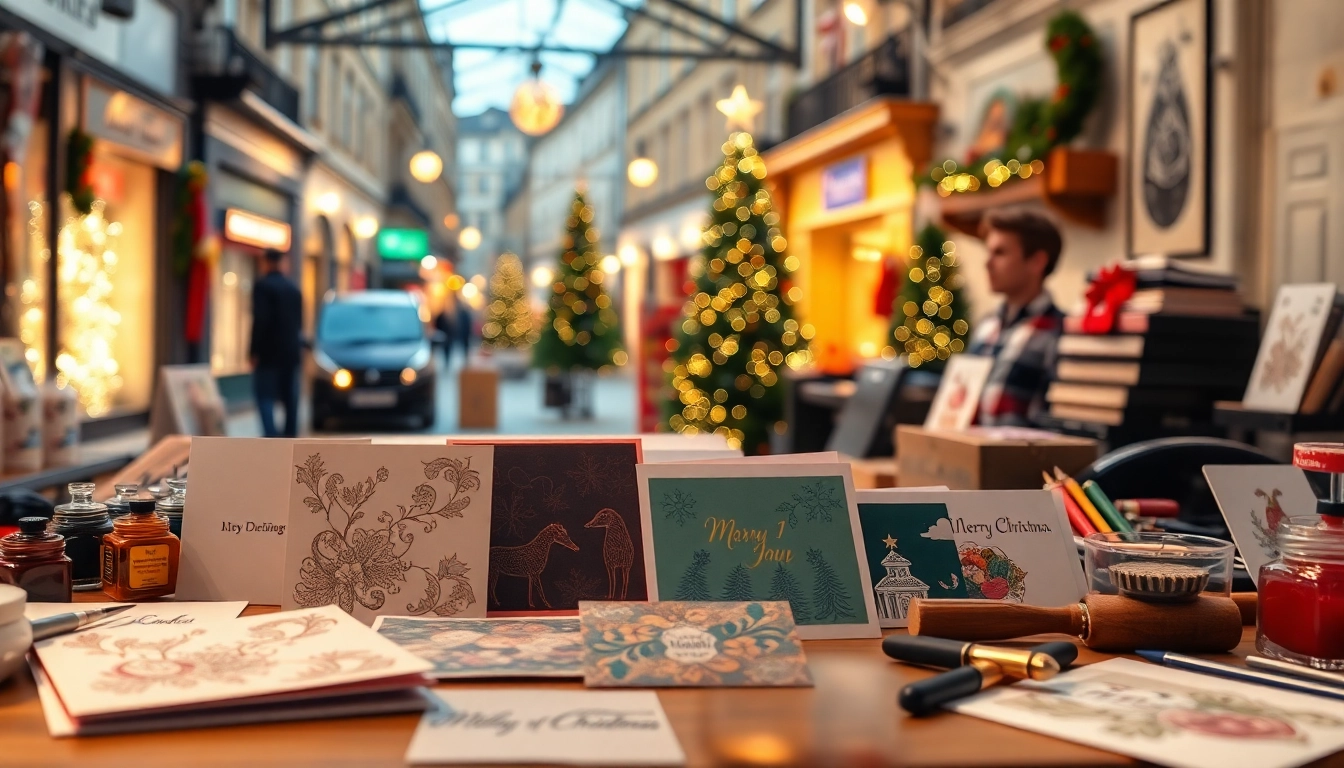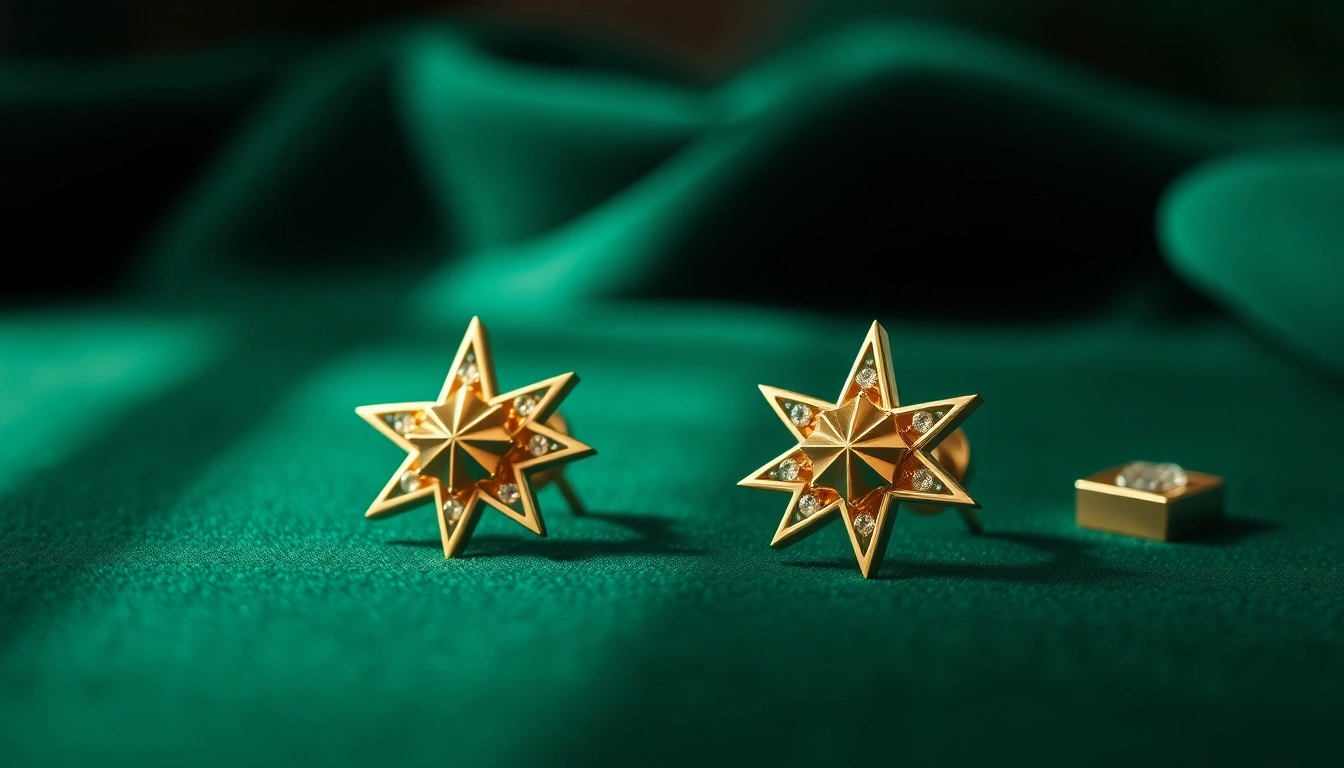Understanding Christmas Card Printing London
The holiday season brings with it joy, festivities, and the cherished tradition of sending Christmas cards. In the bustling capital of the UK, you can find various options for Christmas card printing London, which cater to diverse tastes and budgets. Whether you wish to create heartfelt messages or showcase the latest design trends, understanding the nuances of card printing services can significantly enhance your holiday greetings.
Overview of Card Printing Services
Card printing services encompass a wide range of materials, techniques, and customization options that allow individuals and businesses to create eye-catching designs. In London, these services range from small print shops to large companies offering online services. Customers can choose between custom designs or explore templates designed by graphic artists. Printing services can be tailored to produce everything from traditional family cards to modern corporate greetings.
Benefits of Custom Christmas Cards
Custom Christmas cards offer numerous advantages over pre-made options. These include:
- Personalization: Tailoring your cards with specific messages, images, and designs makes them meaningful and memorable.
- Branding opportunities: For businesses, custom cards reinforce brand identity and foster client relationships.
- Quality control: By selecting the materials and printing techniques, you ensure high-quality results that can enhance the card’s aesthetic appeal.
- Creative expression: Custom designs enable individuals to convey their unique personalities or brand messages effectively.
Seasonal Trends in Card Designs
Trends in card design evolve each year, often reflecting broader cultural shifts and consumer preferences. Some current trends in Christmas card design include:
- Eco-friendly materials: Growing environmental awareness has led to increased demand for cards made from recycled paper and sustainable resources.
- Minimalism: Simple designs that utilize white space effectively are popular, conveying elegance and sophistication.
- Bold typography: Eye-catching fonts that carry the main message are gaining traction, as they make a statement without the need for excessive graphics.
- Hand-drawn illustrations: Custom artwork adds a personal touch, often evoking nostalgia and warmth.
Choosing the Right Design for Your Cards
Inspirational Themes and Styles
Choosing a theme for your Christmas cards is a vital step in the design process. Consider the following popular styles:
- Classic designs: Incorporating traditional elements such as Christmas trees, ornaments, and festive colors evokes a timeless charm.
- Modern aesthetics: Clean lines, geometric patterns, and trendy color combos can appeal to more contemporary tastes.
- Humorous concepts: Funny, witty messages and illustrations can add a playful touch to your greetings, making your card stand out.
- Family-centric themes: Personal photos or illustrations highlighting family moments resonate well with recipients and create a sense of closeness.
Selecting Colors and Fonts
Choosing the right color palette and typography is crucial for enhancing overall card appeal. Popular color trends for Christmas cards include:
- Traditional red and green: These colors are synonymous with the holiday season, evoking joy and celebration.
- Metallic tones: Gold and silver accents can add a touch of luxury and elegance to your design.
- Cool blues and whites: These colors convey a winter wonderland feel and can be refreshing amidst traditional hues.
When it comes to font selection, consider pairing a bold display font with a simple sans-serif font for body text. This combination creates a balanced and attractive layout, ensuring your message is legible while still stylish.
Incorporating Personal Touches
Personalization is a vital aspect of creating memorable Christmas cards. Some effective ways to incorporate personal touches include:
- Including family photos: Personal images increase connection and warmth associated with your greeting.
- Handwritten notes: A handwritten message adds a personal element that digital printing cannot replicate.
- Custom illustrations: Hiring artists to create bespoke artwork can capture the essence of your family or brand.
- Unique envelopes: Personalizing the envelopes can create anticipation and enhance the whole experience of receiving a card.
Materials Used in Christmas Card Printing London
Papers and Finishes for Quality Results
The choice of materials plays a significant role in the final appearance and feel of your Christmas cards. Some popular options include:
- Cardstock: A heavier paper that provides durability and a premium feel is typically used for custom cards.
- Textured papers: Specialty finishes such as linen or felt can add tactile interest and sophistication.
- Glossy vs. matte finishes: Glossy finishes enhance colors and add vibrancy, while matte finishes provide a more subtle and elegant look.
Eco-Friendly Options for Sustainable Printing
With rising concerns about environmental impact, many customers are looking for sustainable printing options. Some eco-friendly practices include:
- Recycled papers: Using sheets made from post-consumer waste helps reduce environmental strain.
- Vegetable-based inks: Shifting from petroleum-based inks to sustainable options minimizes chemical impact.
- Digital printing. This technology reduces waste by allowing for smaller orders without the need for large print runs.
Cost Analysis of Different Materials
Understanding the costs associated with various materials is crucial for budgeting your Christmas card printing. Here’s a brief comparison that can help guide your decisions:
- Standard cardstock: Generally the most affordable option, suitable for bulk printing.
- Textured or specialty papers: Typically more expensive, but they enhance the tactile experience and aesthetic quality of your cards.
- Eco-friendly materials: Costs may vary but can leverage market demand for sustainability.
While it’s easy to opt for the cheapest materials, investing in quality can lead to more satisfied recipients and increased impact.
Printing Techniques to Enhance Your Cards
Offset vs. Digital Printing Methods
When choosing a printing technique for your Christmas cards, it’s essential to understand the differences between offset and digital printing:
- Offset printing: This method produces high-quality images and is cost-effective for large runs. It involves transferring ink from plates onto paper, resulting in vibrant colors and fine details.
- Digital printing: While more suitable for smaller quantities, digital printing offers flexibility and faster turnaround times. It allows for easy customization, making it ideal for personalized cards.
Understanding these methods can help you determine which one aligns best with your vision and budget for printing Christmas cards.
Add-Ons: Embellishments and Special Effects
Enhancing your Christmas cards with special effects can turn a simple card into a stunning piece of art. Here are some popular embellishments to consider:
- Foil stamping: Adds a shiny metallic finish to specific areas, making designs pop.
- Embossing: This technique raises elements of the card for a three-dimensional effect, providing tactile interest.
- Die-cutting: Custom shapes can be made through this technique, allowing for unique silhouettes.
Understanding Printing Terminology
Being familiar with printing terminology can streamline the ordering process and ensure smoother communication with your printer:
- DPI (Dots Per Inch): A measure of printing resolution that affects the quality of the final output.
- Bleed: The area beyond the card’s edge that allows for color and images to extend to the edge without leaving white space.
- Color mode: RGB (Red, Green, Blue) is for digital displays, while CMYK (Cyan, Magenta, Yellow, Black) is used for print designs.
Marketing Your Christmas Cards Effectively
Developing an Engaging Marketing Strategy
To ensure your Christmas card reaches a wide audience, it’s crucial to have a strategic marketing plan in place. Consider the following steps:
- Define your target audience: Understanding who will be receiving your cards will guide design choices and distribution channels.
- Create compelling content: Use engaging visuals and storytelling to connect with your audience and create emotional resonance.
- Set a clear budget: Determine how much you are willing to invest in printing and distribution to maintain profitability.
- Utilize email marketing: Leverage your existing contacts or subscribers to market your cards and encourage pre-orders.
Leveraging Social Media for Promotion
Social media platforms provide a cost-effective way to market your Christmas cards. Here’s how you can leverage these channels:
- Share sneak peeks: Post behind-the-scenes looks at your design process, showcasing the creativity involved.
- Engage with followers: Encourage your audience to share their favorite card styles and features, fostering community interaction.
- Collaborate with influencers: Partner with social media influencers who align with your brand to expand reach and trust.
Metrics to Measure Success and Engagement
Tracking the success of your Christmas card marketing is crucial for understanding effectiveness. Key performance indicators (KPIs) to consider include:
- Return on investment (ROI): Measuring how much profit you generate versus what you invested will help assess financial success.
- Engagement rates: Analyze social media interactions like shares, comments, and likes to gauge audience interest.
- Conversion rates: Track how many viewers of your marketing material result in sales to understand effectiveness.














Leave a Reply